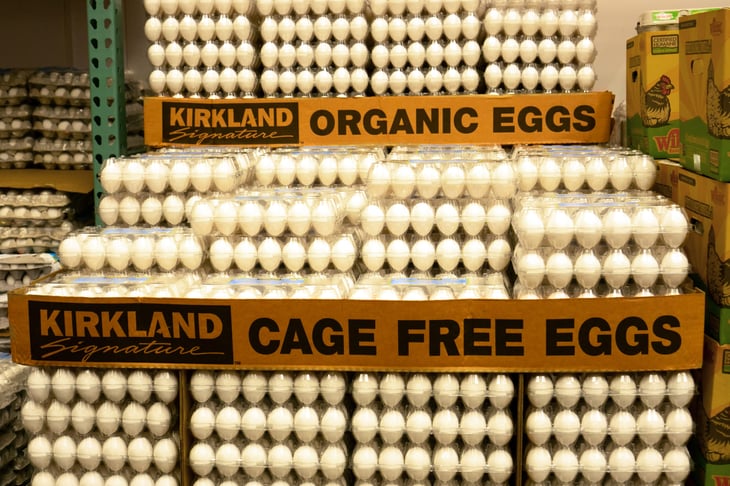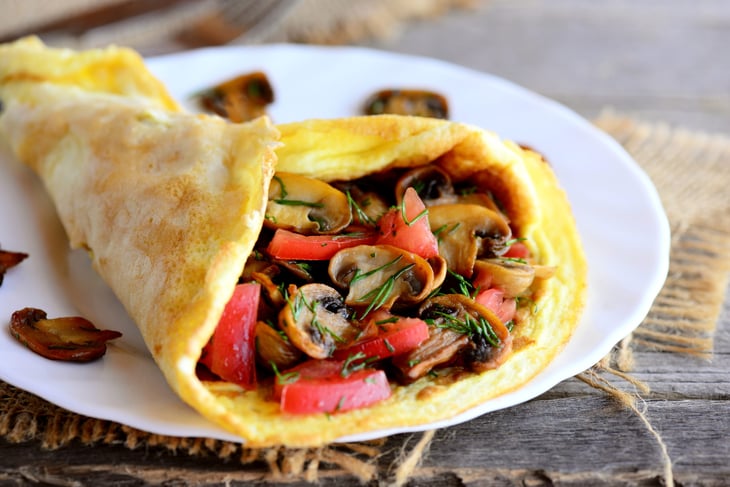
According to a report from CNN, the national average cost of one dozen eggs in the second week of January 2023 was $4.33. Last year around this time, 12 cackleberries cost only $1.33, on average.
That ain’t chicken feed to consumers who are already being hammered by inflation or to restaurants, bakeries and other food producers that use a lot of eggs.
Blame a combination of avian flu and overall inflation. Around 60 million chickens have been culled thus far during this outbreak, CNN reports. Since it takes several months for female chickens to reach their full egg-producing potential, farmers are running behind on production.
Those farmers also have had to pay more to feed and house their hens, and to transport the end (ahem) product.
What’s a consumer to do? Pivot, that’s what. The following tactics can help you keep from scrambling for extra money to pay the egg bill.
1. Eat fewer eggs

Sounds obvious, right? But maybe it isn’t, to some people. For example, maybe you always do a three-egg omelet or three scrambled eggs for breakfast. But if you switch to two eggs, a carton will make six breakfasts instead of four.
There are ways to make two eggs seem like three. (More on that in a minute). However, it could also be that you don’t really need three eggs; it’s just habit for you to eat that many.
Consider reducing the number of egg-heavy breakfasts per week. A smoothie with protein powder or a high-protein cereal could stand in one or two (or more) days per week. Or eat one of those things along with breakfast meat (if any) plus whatever else you like in the morning.
2. Pay less upfront

Reducing the number of eggs you eat is a boost to the grocery budget. But if you don’t want to change your habit, try paying with supermarket gift cards you get free from cash-back portals like Ibotta or from apps like Shopkick.
Not that these are the only ways to do it. You could apply for a rewards credit card and cash in some of the points for grocery gift cards, for example. Or check out “12 Ways You Can Get Gift Cards for Free.”
Warehouse stores like Costco tend to have better egg prices — but they also have bigger egg containers. You might have to buy five dozen at a time. See if family or friends would like to split an order. (Everyone should start saving empty egg boxes now, to make it easier to share the big buy.)
See if your supermarket does “repacks.” When eggs get broken in transit, dairy managers often repackage the unbroken ones. My partner and I buy these year-round, saving as much as 50% per dozen.
If you’re a Kroger shopper, you might even get free eggs. The supermarket chain offers “Best Customer Bonus” digital coupons based on your particular shopping habits. In my case, “free 18-count eggs” shows up regularly in my queue. I found this out quite by accident; now I’m a diligent digital couponer.
3. Augment your eggs

To make an omelet or scrambled eggs more filling without adding more eggs, add one or more of the following:
- Grated cheese: This adds protein as well as a bit of heft. Flavor, too.
- Yogurt: A dollop of this also adds protein. Or fill a finished omelet with yogurt and other add-ins.
- Tofu: A quarter-cup of firm or extra-firm bean curd will stand in for one egg.
- Meat: It’s expensive, but even a little bit of cooked and crumbled bacon or sausage changes the two-egg equation.
- Sauteed veggies: Onions, peppers, spinach, green chilies — whatever you like best. If you have leftover baked potato, dice some into the mix.
- Canned black beans: Rinse and drain, then add a few (or a lot). You could also top a bowl of rice and refried beans with two cooked eggs, salsa and grated cheese for huevos rancheros. (Pro tip: To save even more, learn to cook dry beans yourself — it’s easy, especially with an Instant Pot or slow cooker.)
4. Find egg substitutes

Vegans and people with egg allergies don’t give up on cooking and baking. They just find ways to get around using eggs in their dishes. Erin Huffstetler, who blogs at My Frugal Home, offers numerous options, such as:
- Yogurt or sour cream: Use a quarter-cup per egg when making cakes, cookies, muffins or pancakes.
- Tofu: For a quiche, use the same amount of soft or silken tofu.
- Chia or flax seed: For cookies, muffins and pancakes, mix a generous tablespoon with 3 tablespoons of cold water and allow it to “gel up” before adding to the batter.
- Aquafaba: That’s the liquid from a can of chickpeas or white beans, whisked until foamy; 3 tablespoons will substitute for one egg in baking (except for cakes).
- Fruit puree: For muffins, cookies or pancakes, use a quarter-cup of mashed banana or avocado, applesauce or pumpkin puree plus a half-teaspoon of baking soda.
- Bread crumbs or oatmeal: Substitute 2 to 3 tablespoons per egg if you’re making meatloaf or a savory dish that uses egg as a binder.
Note: You can substitute up to three eggs per recipe, Huffstetler says. For baked goods, you might have to increase the baking time slightly.
5. Freeze extra eggs

If you do find eggs at a decent price — or if you find them at all — consider freezing them. Not in the shell! The National Center for Home Food Preservation explains how.
Note: Frozen-and-thawed eggs may be best for baking or for adding to dishes like meatloaf. They aren’t awful when scrambled, but you might detect a slight texture change. (I did.)
